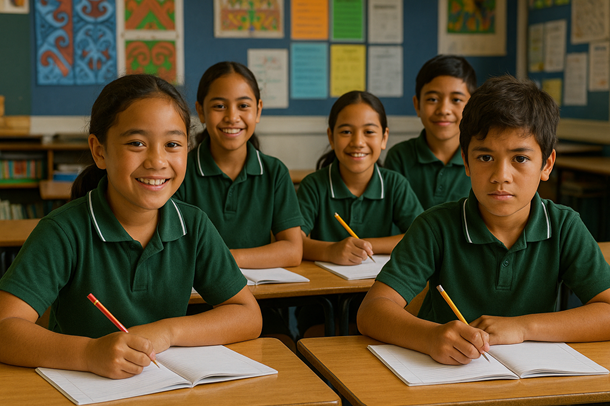According to their media release, the Writer’s Toolbox, a New Zealand and Australian education company who provide an educational writing programme powered by patented AI, designed to help students master writing, is having a serious impact on Māori students literacy achievements.
After using Writer’s Toolbox [using a locally-built AI], Thornton School [Decile 5, in Whakatāne] in the Bay of Plenty found that incomplete sentence usage had decreased for all year levels, with Māori decreasing the most: from 47% to just 4%. While all year levels had an excellent decrease in struggling writers, notably Māori students dropped from 50% to 0.
It highlights the need for innovative interventions like these to achieve cultural and educational equity for Māori students, with the impact reaching far beyond the classroom.
Looking closer at the statistics of the primary school, according to Data.govt.nz there are 112 students. 29 students who identify as Māori, equating to about 25.89% of the student enrolments being Māori.
The media release mentions other schools including:
At Tawhiti School in Taranaki, boys using the AI writing programme demonstrated a significant reduction in incomplete sentences across all years, falling from 21 per cent in 2023 to 10 per cent in 2024. The proportion of boys classified as struggling writers decreased by 74 per cent during the same period.
Tawhiti School have 313 students, of which 151 are Māori, or approximately 48.24% of the student enrolments.
Tamatea Intermediate have 430 students, of which 197 are Māori, approximately 45.81% of the student enrolments.
Having spent several decades in governance roles within New Zealand education, I am well aware of the statistics used in the media release that include in 2023, 28.3% of Māori school leavers did not achieve NCEA Level 1 (versus 14% of Pākehā students), and only 63.6% of Māori youth remained in school until age 17 (versus 79% of non-Māori). It has been an ongoing issue to get Māori literacy rates up using multiple strategies, some which have had impacts such as using local knowledge for learning.
These statistics indicate what I have been suggesting for the past several years, is that AI has the potential to assist Māori in education. There are multiple reasons in my opinion, including relationships with teachers that may include stereotypes from parents (other intergeneration’s) who have had bad interactions with the education system in the past, trust issues, being able to relate to Māori culture, and that Māori children often learn differently.
If these statistics are trailed at other schools with the same positive results, it could be a real educational game changer for Māori student success.

